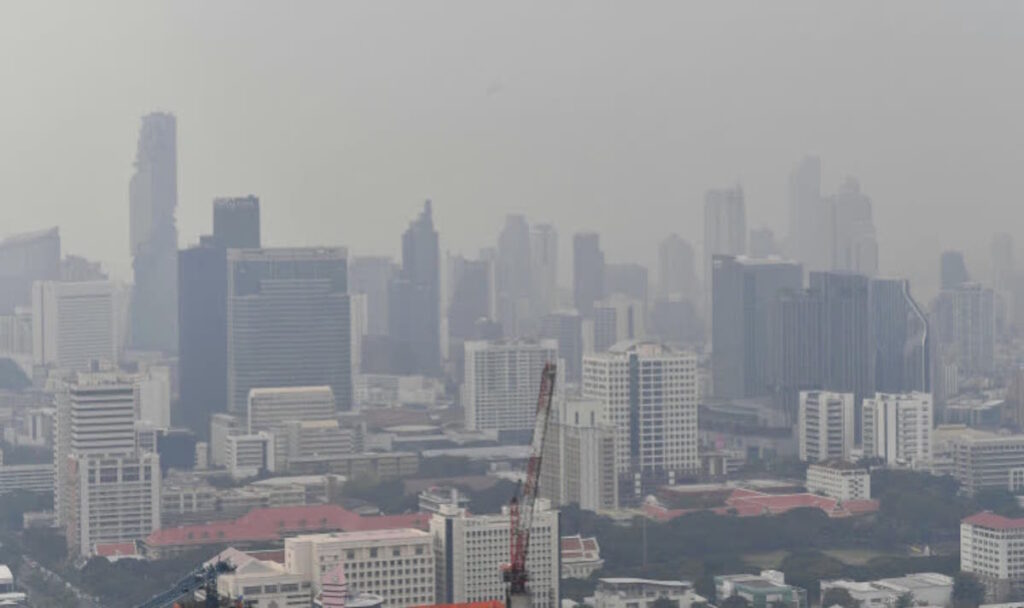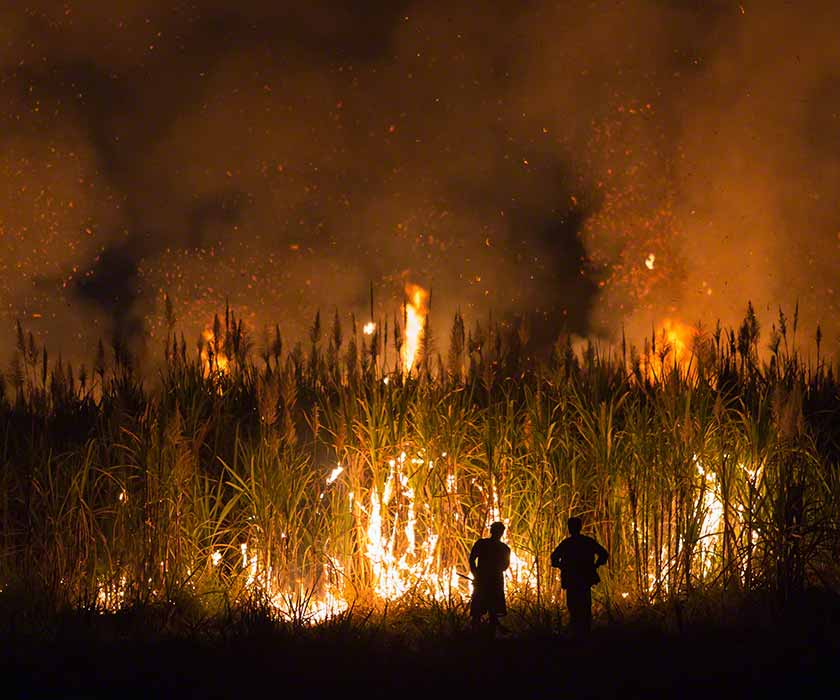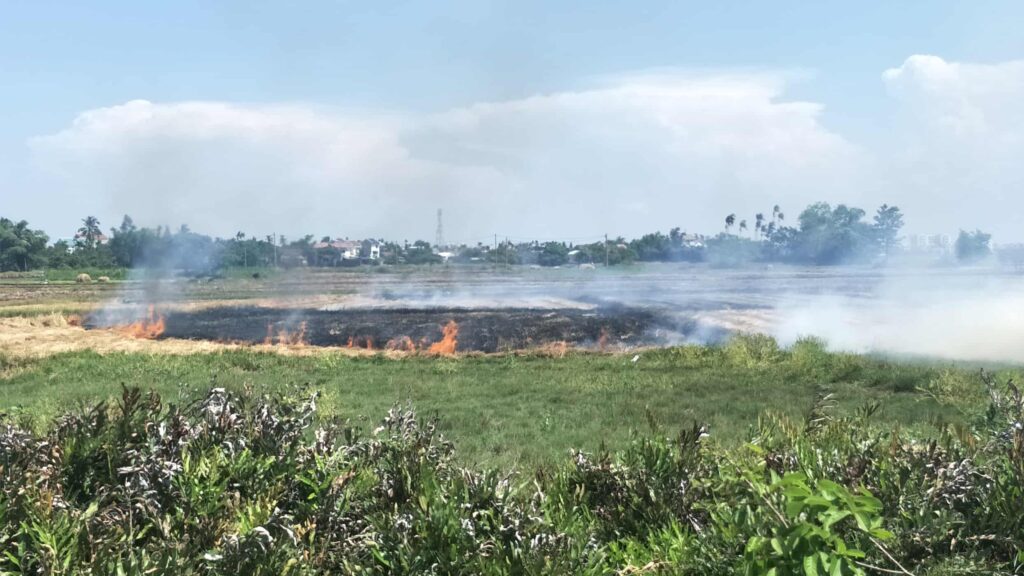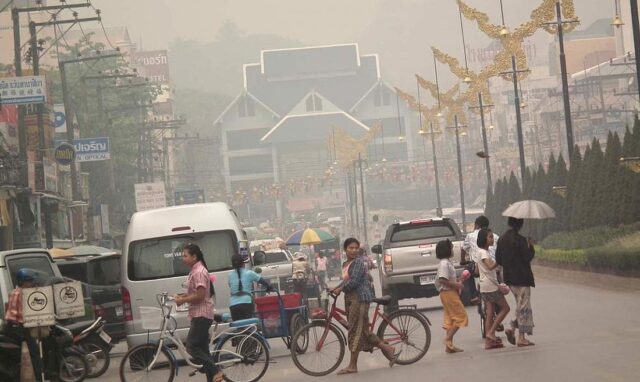As we went out of town for a two-week holiday in Northern Thailand this winter, we noticed how very dirty and smoggy most of the cities we visited were. With the exception of the few islands where tourists and local expatriates go for a break, it is incredibly difficult to escape the pollution in this part of the world.
Despite the unsightly smog that blankets northern Thailand during the dry season, the region is a popular tourist destination. While the smells of combustion, grease and wood fires can be a bit overwhelming for some, pollution plays no part in the area’s appeal.
The cost of pollution in Chiang Mai is close to that of a Western city and the air quality in the province is worse than Bangkok’s. The reasons for this are a combination of factors. Economic growth has led to an increase in traffic volume and an increase in the use of fuel for transport. The province has a large coal industry and its ability to absorb this pollution is limited.. Read more about burning season chiang mai 2024 and let us know what you think.
Friends and I arrange our vacation itineraries depending on weather, cuisine, and conferences in between after many years in Southeast Asia. However, “burning season” in Chiang Mai and beyond is a given.
Written on March 11, 2012, and updated on a regular basis.
What You Should Know About Chiang Mai’s Smog and Smoke

Thailand is engulfed in a cloud of unhealthy smoke. NASA’s Earth Observatory provided this image.
During the burning season, the city is shrouded in pollution, and even a 10-minute stroll around the block leaves your eyes watering and your throat sore. Those of us who are still walking around town are wearing masks. The March haze is nothing new; people have been complaining about asthma problems in Chiang Mai in the months leading up to the rainy season for years. The pollution was low the first year I lived in Chiang Mai since it rained early. The next year, I visited Northern Thailand for the first time during the smoggy, foggy late winter months.
When is the season for smokey fires?

The ‘burning season’ typically lasts from late February until late April. When compared to the rainy and non-smoky months, Doi Suthep’s mountain views are obscured by smoke, and breathing seems labored. The season comes to an end when the rains start to fall, which usually happens shortly after Songkran, Thailand’s new year. The rainy season doesn’t start until later in the summer, but the showers in late April and May are enough to clear the sky and disperse the filthy air.
Why is Northern Thailand so polluted?
Northern Thai farmers are burning their fields to enable for replanting and regrowth. The Irawaddy reported in 2009 that
“The majority of the pollution is caused by the traditional rural technique of slash-and-burn farming, in which farmers burn fields during the dry season between February and April so that the ashes feed the fields while they lay fallow.”
According to a 2016 National Geographic article, this farming technique is good for the environment, even if it is harmful for human lungs:
These traditions are very diverse and may be found on every continent. They do, however, follow a pattern. To begin, the majority of the trees and bushes are chopped down in a small area of forest, usually about one hectare, and dried. The wilted vegetation is burnt in a few days to provide nutrients to the soil in preparation for growing crops.
Artificial fertilizers are no longer required as a result of this technique. Furthermore, the fire destroys weeds and pests, obviating the need for herbicides and insecticides during the brief time of crop cultivation.
The field is fallowed, or put to rest, after one or two growing seasons. The forest eventually returns, and the cycle begins again.
In addition to deliberate “slash and burn” farming, the air quality deteriorates for the same reason it does elsewhere: forest fires starting and spreading rapidly in the hot, dry air owing to hot patches in the forest.
A video from Channel News Asia from 2019 shows firemen in Chiang Mai working around the clock for weeks to put out forest fires:
Here are two views from the same vantage point, one during smokey season and the other before and after:
The Thaiger is the source.
During the burning season, how terrible does the air get?

For one thing, the air quality is poorer in the mornings and then improves in the afternoon. However, the air quality deteriorates with time. It’s terrible. We all had itchy eyes, painful throats, wheezing, chest discomfort, and other ailments throughout my season. It goes without saying that if you suffer from asthma, I would advise you to avoid these months. Due to the pollution, several of my friends who teach farther north claimed that some of their young kids would come up vomiting. Toxic air is harmful to everyone, but the young and old, as well as the immunocompromised, are more vulnerable.
The Washington Post published an article in 2019 that begins with this powerful statement:
The city with the worst air pollution in the world wasn’t an industrial powerhouse with millions of people in mid-March. Chiang Mai, Thailand’s tourist-friendly cultural capital, was the location.
The AQI for moderately contaminated air ranges from 50 to 100. The air quality index (AQI) for an April meeting of the Association of Southeast Asian Nations (ASEAN) Finance Ministers and Central Bank Governors in Northern Thailand was shockingly high at 379.
The same WaPo story concluded with a comparison: Chiang Mai ranked 8th in AirVisual’s list of major cities by air pollution on May 7, 2019 at 10 a.m. Eastern Time (thus, May 8th at night), with an AQI of 121. New York, on the other hand, was ranked 73rd with an AQI of 18.
The flames may become so severe farther north that evacuations near Mae Sai are discussed.
In this shambles, I can’t see very far.
Chiang Mai’s Burning Season Resources
Despite the government’s promises that the fires in Chiang Mai will be put out, the fires persist. It’s a far more complex matter than just prohibiting burning; farmers who do burn their fields do so to increase their crops, and the issue is about more than a simple shift.
Other entries on the burning season may be found here:
For information on air quality in Chiang Mai and beyond, go to:
For smog and smoke pollution masks and purifiers, go to:
- You’ll need a high quality pollution mask with at least a particulate N95 rating (meaning 95 percent of air particles bigger than 0.3 micrometres/microns in diameter are kept out of your airways), such as this 3M Particulate Respirator 8210V, N95 Respiratory Protection mask.
- In Chiang Mai, where can I purchase pollution masks? These and other masks may be purchased at a 3M shop in Chiang Mai’s old town (inside the city gates). You’ll want to stock up on them ahead of time since they’ll be scarce once the fire starts.
- You may buy portable air purifiers on Amazon and transport them to Thailand, or you can buy them locally — just make sure they can filter particulate matter less than 2.5 microns. Friends have had excellent success with the Xiaomi Mi 2S Air Purifier, which is available here, for local purchases.
Burning and Smoke for a Season

So, why did I decide to stay? For instance, we don’t only wear sad expressions in our pollution masks; we also have fun with them.
Ana and I leaping into the haze.
So far, my stay in Thailand has been filled with reunions with old acquaintances, visits to family members (like my cousins below), and doing what I do best: eating (click here for my Chiang Mai guide!).
My relatives, myself, and Giorgio, a buddy of mine.
I was a bit too thrilled to be eating Thai cuisine again to remember to snap a picture before we started eating.
What was formerly known as pad pongali gai, a delectable dry yellow curry.
The following time, I didn’t forget! Grilled chicken from a fantastic Isaan restaurant near Chiang Mai University:
Chiang Mai’s 10000 percent Isaan Grilled Chicken
Somtam (spicy, sweet, and wonderful green papaya salad):
Salad with a lot of color.
And here’s the entire menu:
Somtam, tom yum goong, and grilled chicken
There are a variety of non-traditional meals available as well, and I’m not talking about pizza. The temples along Ratchadamneon’s Sunday night strolling street are packed with food vendors, including a fantastic dim sum stand at Wat Sum Pow:
And then there were the people below.
Staying or leaving is a personal decision. After one season, I was concerned about my lungs and throat, so I relocated during the smoke months. Many of my pals, on the other hand, remained. It’s worth noting that you may need to go outside Bangkok: NPR reports that schools in Thailand’s capital have been closed due to hazardous air since January 2019.
Here’s more from the New York Times on Thailand’s efforts to address Bangkok’s pollution issue.
Pollution is a serious problem in many parts of the world, not just in the developing world. It is a fact that we are all affected by the air pollution that is generated by other people’s industries, as well as the natural processes that produce air pollution.. Read more about chiang mai air quality and let us know what you think.
Frequently Asked Questions
How bad is the pollution in Chiang Mai?
Pollution in Chiang Mai is very bad.
How polluted is Chiang Mai?
Chiang Mai is not as polluted as you might think.
Why is Chiang Mai air quality bad?
Chiang Mai air quality is bad because of the high levels of pollution.




